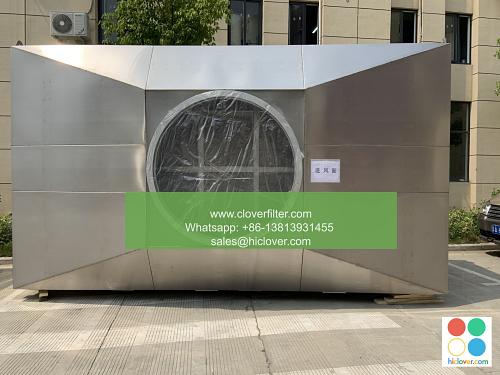The Benefits of Electrostatic Precipitators

Electrostatic precipitators (ESPs) are highly efficient Air Pollution Control Devices used to remove particulate matter and gaseous pollutants from industrial flue gases, thereby reducing environmental pollution and promoting clean energy. The benefits of electrostatic precipitators are numerous, and their applications are diverse, ranging from power generation and industrial manufacturing to waste management and air purification.
How Electrostatic Precipitators Work
The working principle of ESPs involves the use of electrostatic charges to attract and collect particulate matter from the gas stream. The process involves ionization, charging, and precipitation of particles, which are then collected in a hopper or collection plate. The efficiency of ESPs can be enhanced by using high-voltage supplies, optimized electrode designs, and advanced control systems.
Benefits of Electrostatic Precipitators
The benefits of electrostatic precipitators are numerous and can be summarized as follows:
* High Efficiency: ESPs can achieve particulate matter removal efficiencies of up to 99.9%, making them an effective solution for air pollution control.
* Low Operating Costs: ESPs have low operating costs compared to other air pollution control technologies, as they do not require high-temperature or high-pressure processes.
* Flexibility: ESPs can be designed to handle a wide range of gas flow rates and particulate matter concentrations, making them suitable for various industrial applications.
* Environmental Benefits: ESPs help reduce environmental pollution by removing particulate matter and gaseous pollutants from the atmosphere, thereby promoting clean air and public health.
Application Areas of Electrostatic Precipitators
Electrostatic precipitators have a wide range of applications in various industries, including:
* Power Generation: ESPs are used to control particulate matter emissions from coal-fired power plants, oil-fired power plants, and gas-fired power plants.
* Industrial Manufacturing: ESPs are used to control particulate matter emissions from cement plants, steel plants, and chemical plants.
* Waste Management: ESPs are used to control particulate matter emissions from waste-to-energy plants and landfill gas plants.
* Air Purification: ESPs are used in air purification systems to remove particulate matter and gaseous pollutants from the air, promoting indoor air quality and public health.
Conclusion
In conclusion, electrostatic precipitators are highly efficient Air Pollution Control Devices that offer numerous benefits, including high efficiency, low operating costs, and flexibility. Their applications are diverse, ranging from power generation and industrial manufacturing to waste management and air purification. As the world moves towards clean energy and environmental sustainability, the use of electrostatic precipitators is expected to increase, promoting clean air and public health. It seems like you forgot to include the prompt. Could you please provide more details or clarify what you need assistance with?

